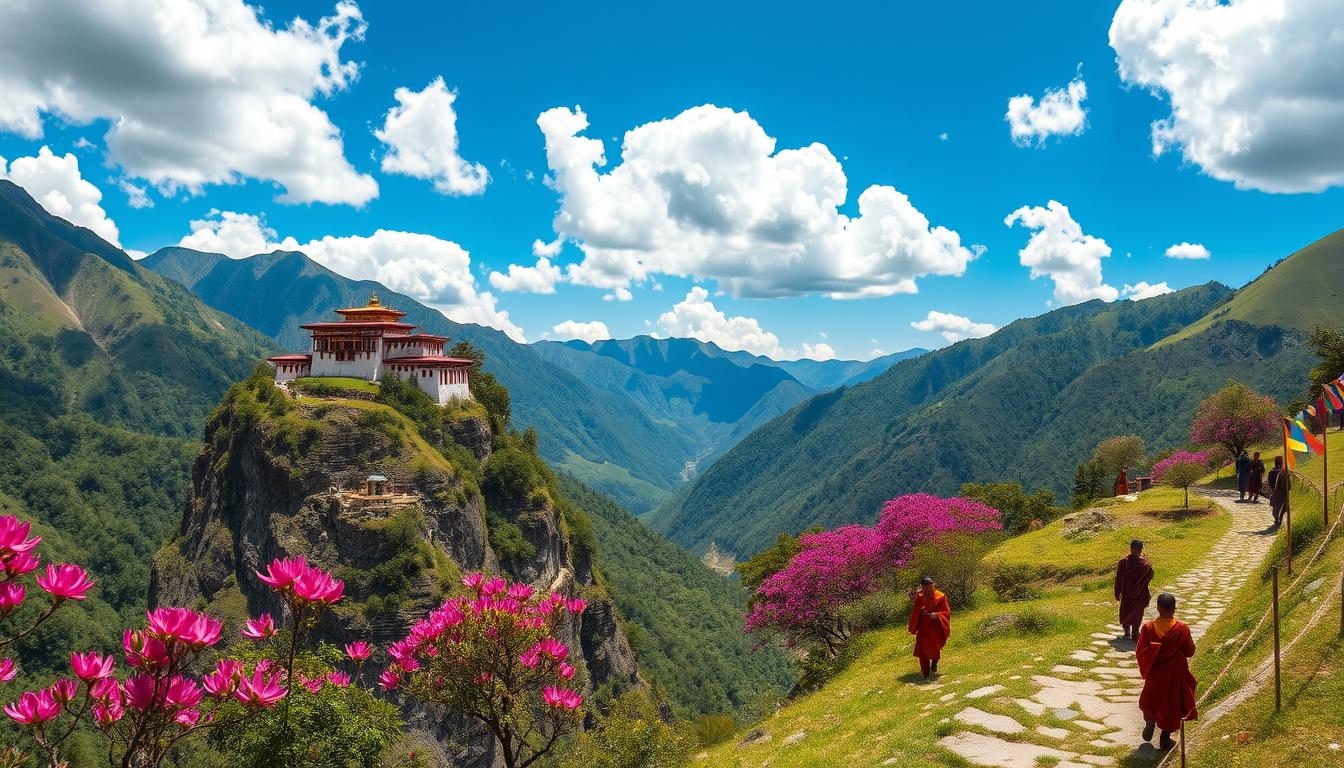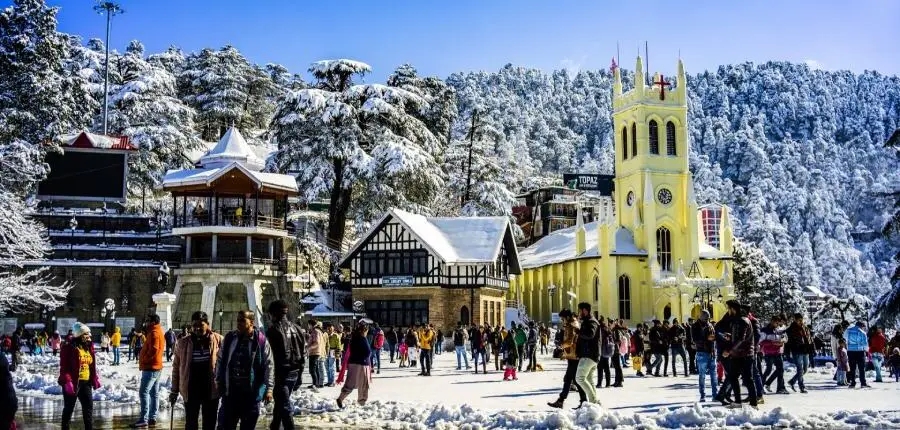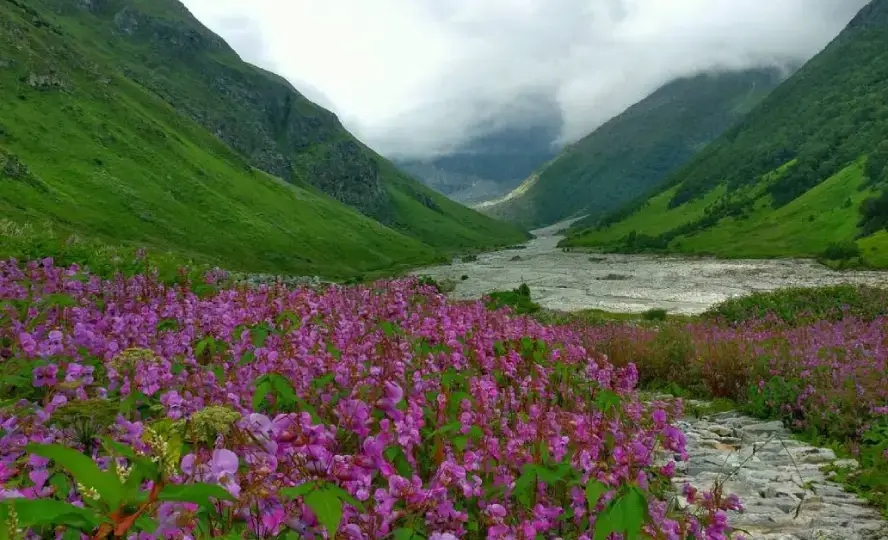Udaipur, often referred to as the "Venice of the East" is renowned for its royal heritage and architectural grandeur. As the historic capital of the Mewar Kingdom, Udaipur’s royal past is intricately woven into its palaces, havelis, and ancient streets. In this post, we’ll take a journey through the city’s most significant royal landmarks, revealing the stories, splendour, and culture that shaped Udaipur's legacy.
1.The Majestic City Palace: A Royal Marvel
Perched on the banks of Lake Pichola, the City Palace is the crown jewel of Udaipur’s royal heritage. Built over several centuries, this sprawling palace complex showcases a stunning blend of Rajasthani and Mughal architecture. Inside, you’ll find intricate marble and granite work, opulent courtyards, stunning balconies, and the ornate Zenana Mahal (Queen’s Palace). The palace also houses the City Palace Museum, displaying royal memorabilia, weaponry, and intricate miniature paintings that provide a window into the history of the Mewar dynasty.
Main attractions
- The Crystal Gallery, which boasts an extraordinary collection of crystal artifacts.
- Badi Mahal (Garden Palace), a uniquely elevated garden within the palace.
- The grand Durbar Hall, which once hosted royal ceremonies and feasts.
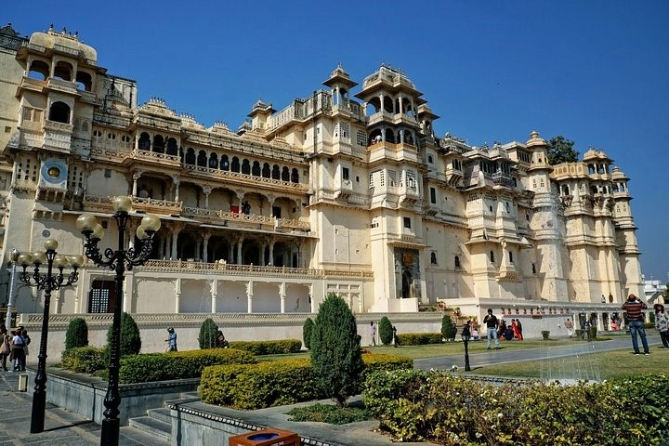
2.Lake Palace (Jag Niwas): A Floating Dream
one of Udaipur’s most iconic landmarks, the Lake Palace (now a luxury hotel managed by Taj Hotels) is a stunning white marble structure that appears to float on the serene waters of Lake Pichola. Built in 1746 by Maharana Jagat Singh II, this palace was once a summer retreat for the royal family. Today, it remains a symbol of royal opulence and is a must-visit, even if just to admire it from afar during a boat ride on the lake. The palace exemplifies classical Mewar architecture, with its white marble walls, intricately carved balconies, and pillared terraces. The use of marble, inlaid stones, and ornate detailing make the palace a masterpiece of Rajput craftsmanship. Inside the palace, guests can find serene lily ponds and courtyards. The Neel Kamal restaurant, which overlooks these ponds, offers an intimate and peaceful dining experience amidst the tranquil waters. The palace has numerous jharokhas (overhanging enclosed balconies) offering panoramic views of the surrounding lake and city. The terraces and rooftops of the palace provide some of the most picturesque sunset views in Udaipur. The Lake Palace has been featured in several films, including the James Bond movie "Octopussy", enhancing its global allure. The palace’s timeless beauty, combined with modern luxury, continues to make it a prime destination for weddings, romantic getaways, and those looking to experience Udaipur's royal heritage.
Main Attractions
- The intricate courtyards and fountains of the palace, preserving its royal grandeur.
- The sunset views of the palace from the nearby Ambrai Ghat.
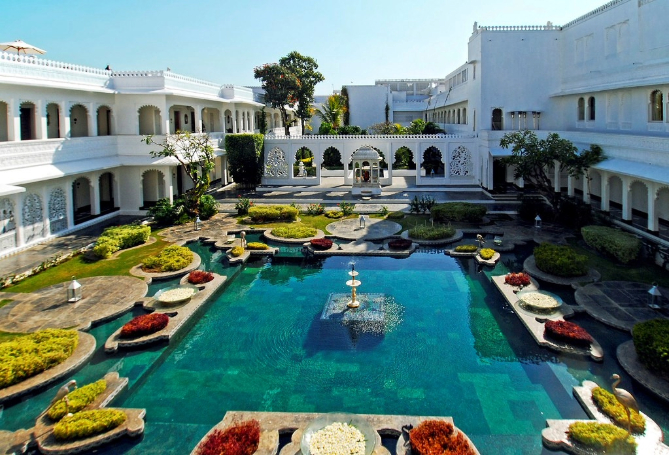
3.Fateh Prakash Palace: A Tribute to Royal Lifestyle
Located adjacent to the City Palace, Fateh Prakash Palace offers a glimpse into the luxurious lifestyle of Udaipur’s royals. It is famous for its Durbar Hall and the Crystal Gallery, housing the world’s largest private collection of crystal. The hall is adorned with massive chandeliers and regal portraits, offering a sense of royal grandeur that once filled this space. The palace is renowned for its exquisite architecture, which features traditional Mewar elements such as domes, turrets, and intricate marble work. The interiors are equally grand, with crystal chandeliers, royal artifacts, and antique furniture. Now converted into a luxury hotel, Fateh Prakash Palace offers a regal experience for guests, combining modern amenities with the charm of Rajasthani heritage. The palace also houses the Crystal Gallery, one of the largest collections of crystal in the world, and has panoramic views of Lake Pichola and the surrounding Aravalli hills. Its tranquil location, rich history, and luxurious ambiance make it a sought-after destination for tourists, especially those looking to experience Udaipur's royal legacy.
Main Attractions
- The ornate royal seating and thrones displayed in the Crystal Gallery.
- The magnificent architecture and fine artwork that adorns the hallways.
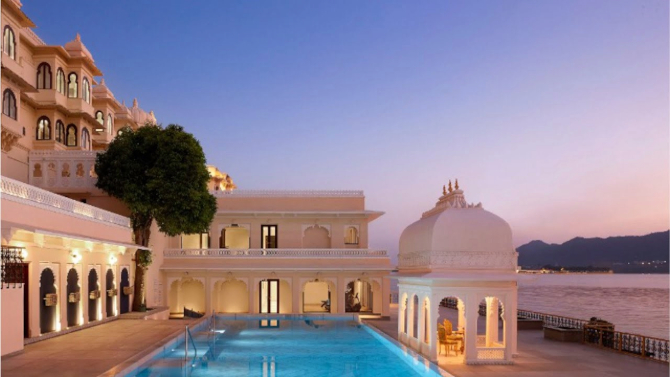
4.Shiv Niwas Palace: Once a Royal Residence
Shiv Niwas Palacein Udaipur is a majestic heritage hotel that was once a royal residence, built during the early 20th century as part of the larger City Palace Complex. Originally constructed during the reign of Maharana Fateh Singh, the palace was intended as a guesthouse for visiting dignitaries and royals. Its elegant crescent-shaped design and grandeur reflect the regal lifestyle of the Mewar dynasty. Shiv Niwas Palace showcases a blend of traditional Rajasthani and European architecture. Its graceful domes, balconies, and arcades are characteristic of Mewar's royal structures, while its layout is designed to accommodate a luxurious lifestyle. The intricate carvings, marble work, and classic furnishings add to the grandeur. As a royal residence, the palace has hosted many prominent figures, including British and European dignitaries. Now converted into a luxury hotel managed by the Udaipur Royal Family, Shiv Niwas Palace offers royal suites, terrace suites, and historic rooms, each adorned with period furniture, vintage paintings, and traditional decor. The rooms still reflect the elegance of the era when the palace was an exclusive royal guesthouse. The interiors are embellished with original frescoes and murals that depict scenes from Rajput history and mythology. The palace features open courtyards and well-maintained gardens, which provide a serene and peaceful environment for guests. Shiv Niwas Palace houses several restaurants, including Paantya, an all-day dining restaurant that serves Indian and Continental cuisine in a lavish setting, and Palki Khana, a European-style café overlooking the City Palace. As a part of Udaipur’s royal legacy, Shiv Niwas Palace continues to embody the grandeur of Rajput royalty, offering guests a chance to live like royalty themselves. Its blend of historic charm and modern luxury makes it a sought-after destination for travelers who wish to experience Udaipur’s regal past in a contemporary setting.
Main Attractions:
- Its grand suites and open courtyards.
- The vintage car collection exhibited at the palace’s entrance.
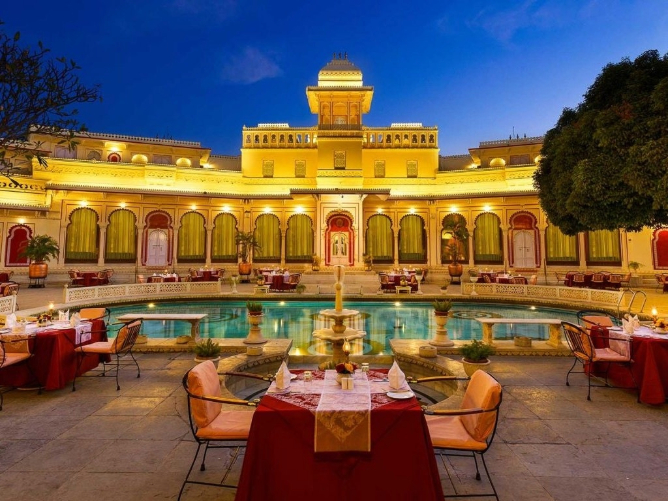
5.Bagore Ki Haveli: A Glimpse into Aristocratic Life
Bagore Ki Haveliis a historic mansion located on the banks of Lake Pichola in Udaipur, Rajasthan. Built in the 18th century by Amar Chand Badwa, the Prime Minister of Mewar, this haveli is a magnificent example of traditional Rajasthani architecture. It was later occupied by the royal family of Mewar and has since been converted into a museum showcasing the rich cultural heritage of Rajasthan.
The haveli boasts over 100 rooms, with intricate mirror work, delicate glass windows, frescoes, and traditional Rajasthani decor. Each room tells a different story of the lifestyle of the royal family, with courtyards, terraces, and jharokhas (balconies) offering beautiful views of the lake and the surrounding city. The haveli has been carefully restored and now houses several exhibits such as Traditional Rajasthani Costumes, Ancient Weaponry, Photographs and Paintings and Royal Palanquins. One of the most popular attractions of Bagore Ki Haveli is the Dharohar Dance Show, which is held every evening. The show features traditional Rajasthani folk dances such as Ghoomar and Bhavai (the balancing act with pots), along with puppet shows that depict scenes from Indian mythology. Bagore Ki Haveli is not just an architectural gem but also a cultural hub, offering tourists a rich experience of Rajasthani heritage. The Dharohar Dance Show, in particular, is a must-see for anyone interested in the folk arts of Rajasthan, with performances that have been passed down through generations. Bagore Ki Haveli is a treasure trove of Rajasthani culture, architecture, and history. Its transformation into a museum has preserved the essence of Udaipur’s royal past while making it accessible to the public, and the cultural programs hosted here continue to keep the traditions of Mewar alive.
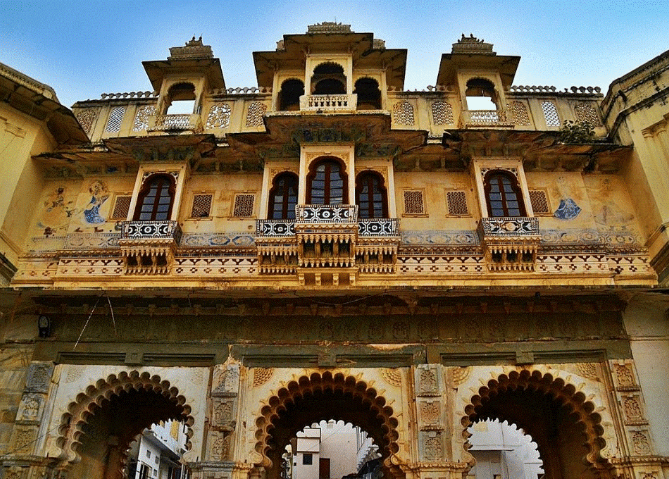
6.Kumbhalgarh Fort: A Royal Fortress
Kumbhalgarh Fort, located in the Rajsamand district of Rajasthan, is one of the most impressive and historically significant fortresses in India. Just a two-hour drive from Udaipur, it is one of the most significant and formidable forts in Rajasthan. Built in the 15th century by Maharana Kumbha of the Mewar dynasty, it is renowned for its massive defensive walls and strategic location atop the Aravalli Hills. The fort is a UNESCO World Heritage Site and a symbol of Rajput valour and architecture. One of Kumbhalgarh’s most famous features is its 36-kilometer-long wall, making it the second-longest wall in the world after the Great Wall of China. The wall, which encircles the fort, is 15 feet wide and was designed to defend the kingdom from invasions. It is often referred to as "The Great Wall of India." Located at the top of the fort, Badal Mahal (the Palace of Clouds) is the highest point and offers stunning panoramic views of the surrounding landscape. The palace has two sections, Zanana (for women) and Mardana (for men), both adorned with intricate paintings and architectural details. Kumbhalgarh Fort is home to over 300 ancient temples, most of which are Jain and Hindu temples. One of the most significant temples in the fort, it houses a six-foot-tall Shiva lingam and is still worshipped by locals. The fort is protected by seven large gates, each serving as a key point of defence. Surrounding the fort is the Kumbhalgarh Wildlife Sanctuary, home to a diverse range of flora and fauna, including leopards, sloth bears, wolves, and various bird species. The fort hosts a light and sound show every evening, which tells the story of its glorious history, the reign of Rana Kumbha, and the valour of Maharana Pratap. Kumbhalgarh Fort stands as a testament to the military ingenuity and architectural prowess of the Rajput rulers. It is a symbol of Rajasthan’s rich history of defence, valour, and independence.
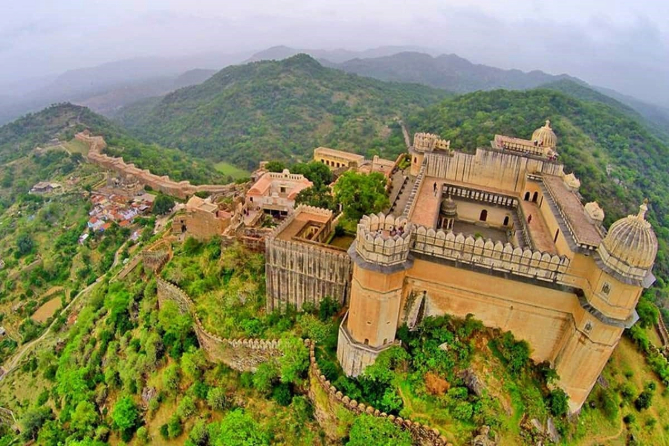
7.Jag Mandir: The Island Palace
Jag Mandir, also known as the Island Palace, is a stunning palace located on an island in Lake Pichola in Udaipur, Rajasthan. Built by the Mewar dynasty in the 17th century, this beautiful structure was used as a summer retreat and a place of refuge for royal families. Its serene location, impressive architecture, and rich history make it one of Udaipur’s key landmarks. Jag Mandir is a fine example of Mughal-Rajput architecture, with its intricately carved marble facades, domes, and pavilions. The palace is made of white and yellow sandstone, giving it a pristine look that complements its island setting. The entrance to the palace is guarded by life-size marble elephant sculptures, adding a royal and imposing element to the structure. The palace is surrounded by lush garden courtyards, which were meticulously designed for the relaxation of the royal family. The well-manicured lawns, flowering trees, and ornate fountains create a peaceful ambiance. One of the most important structures within Jag Mandir, Gul Mahal was built by Maharana Karan Singh in 1620 as a refuge for the Mughal prince Shah Jahan. The Zenana Mahal, or women’s quarters, is another significant part of Jag Mandir. It was designed for the royal women and offers stunning views of Lake Pichola. Jag Mandir offers stunning views of Udaipur’s other famous landmarks, such as the City Palace, the Lake Palace (Jag Niwas), and the Aravalli Hills. The palace’s reflection in Lake Pichola, particularly at sunset, creates a breathtaking visual spectacle. Jag Mandir is accessible only by boat from the City Palace jetty. The boat ride across Lake Pichola is an integral part of the experience, as it offers panoramic views of Udaipur's famous landmarks. Jag Mandir is a popular venue for destination weddings, luxury events, and festivals. The palace’s romantic setting and historical grandeur make it a preferred location for special occasions.
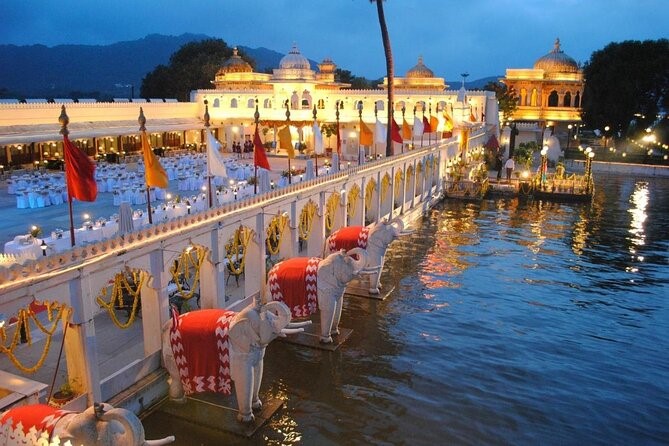
This journey through Udaipur’s palaces, havelis, and forts is not just about sightseeing—it's about stepping back in time to experience the royal lifestyle that shaped the culture and history of Rajasthan.


